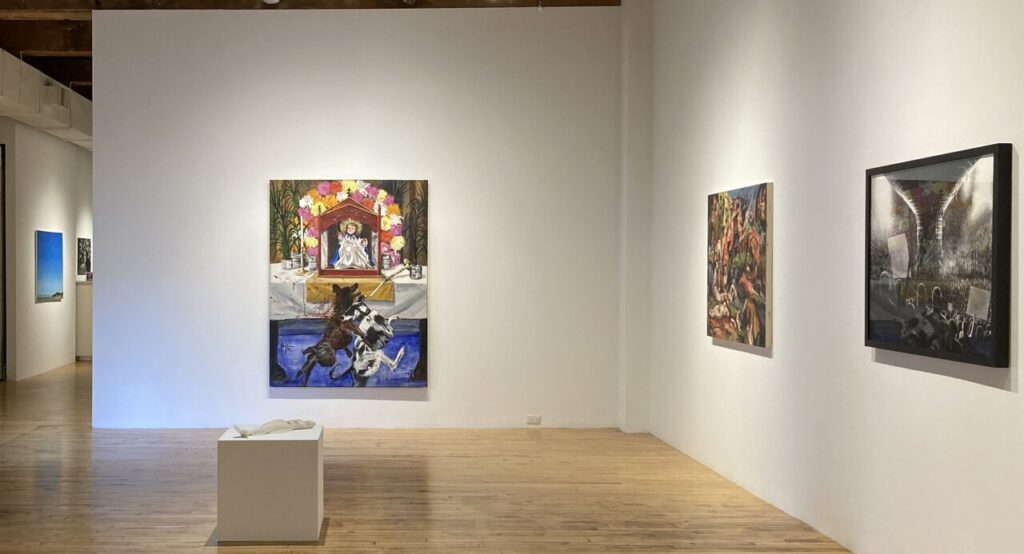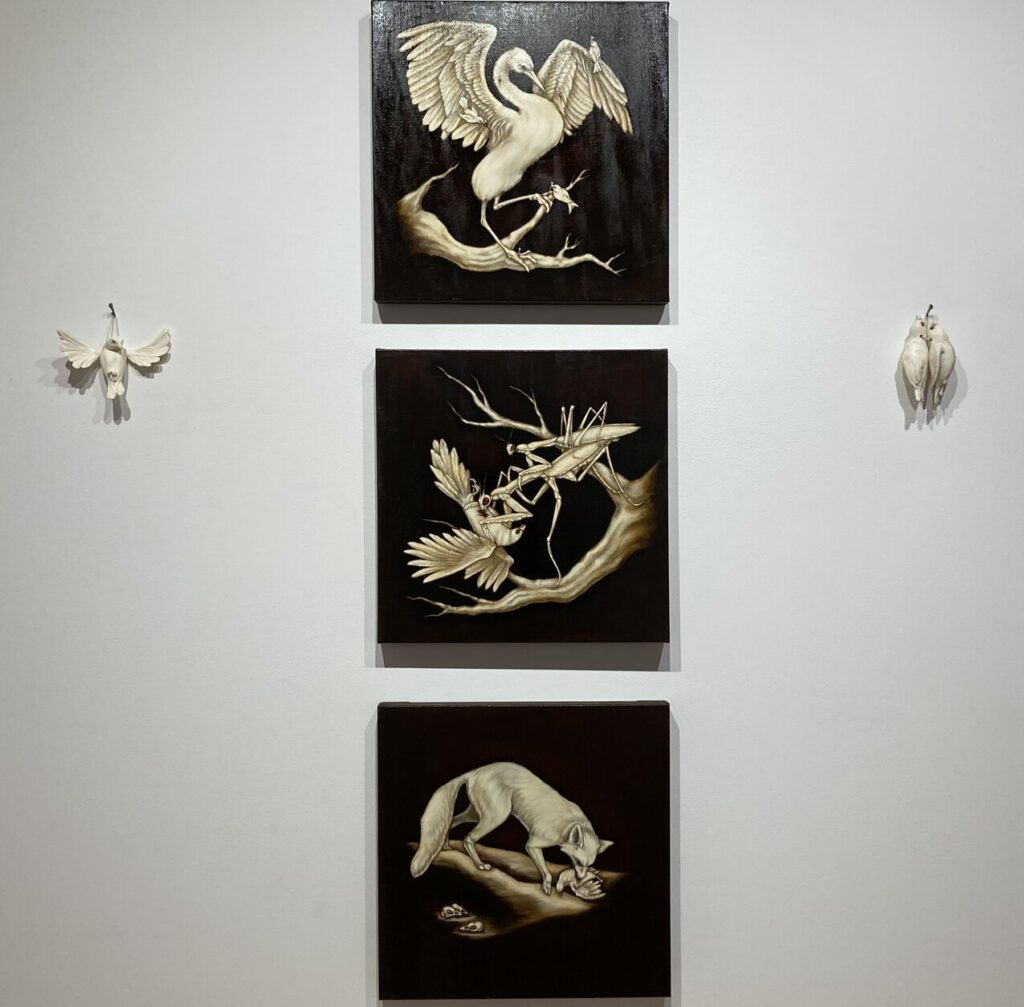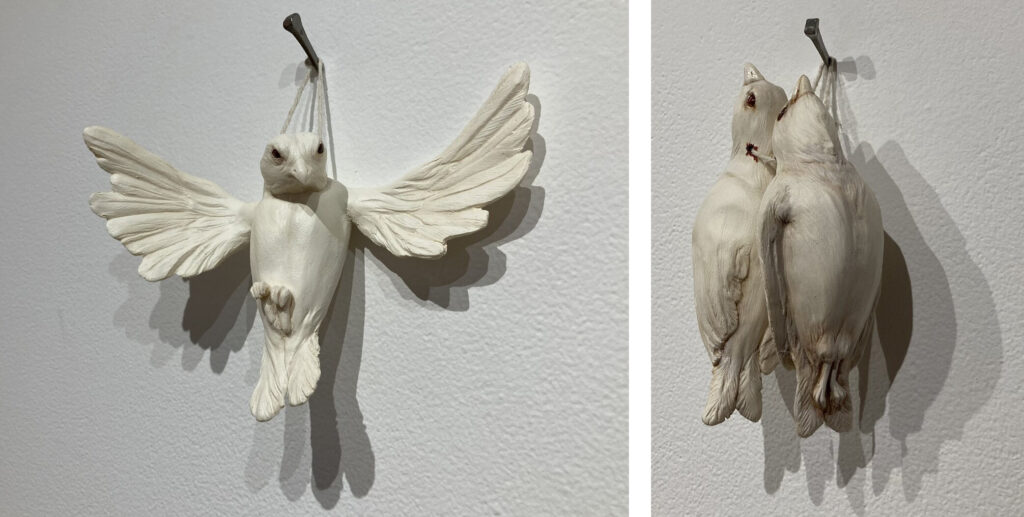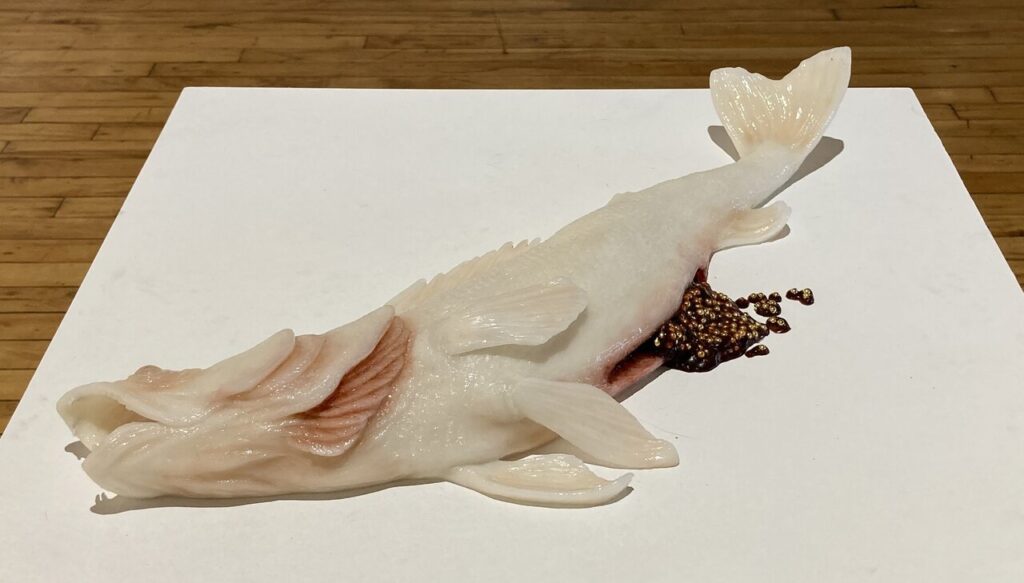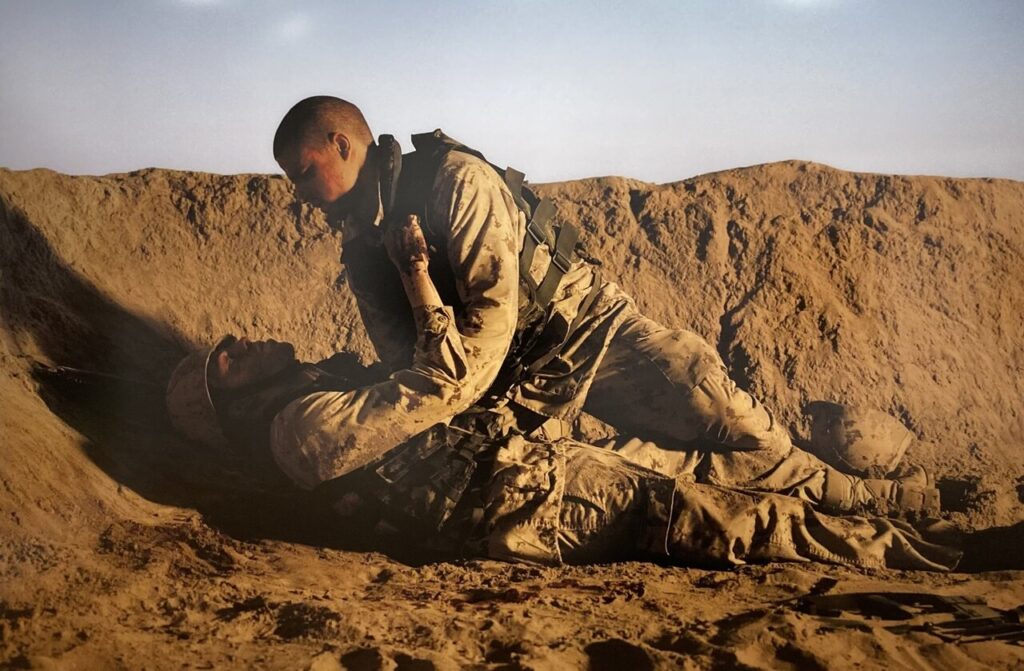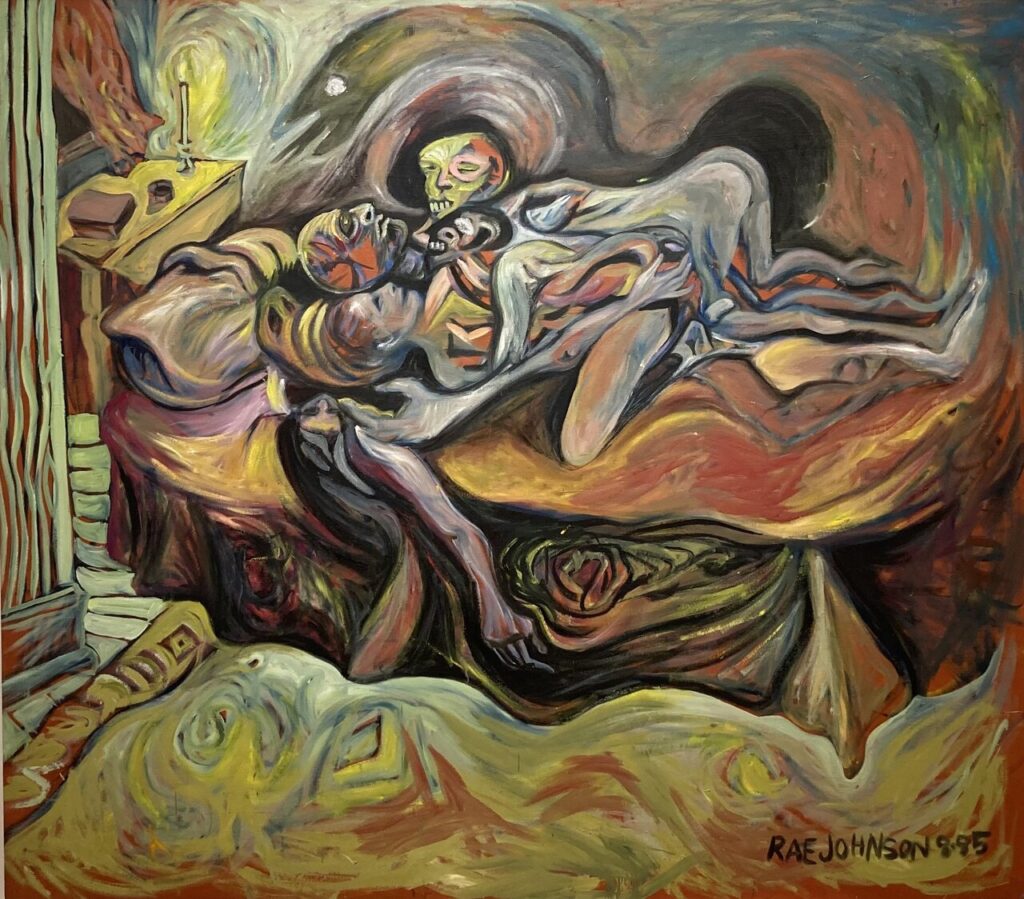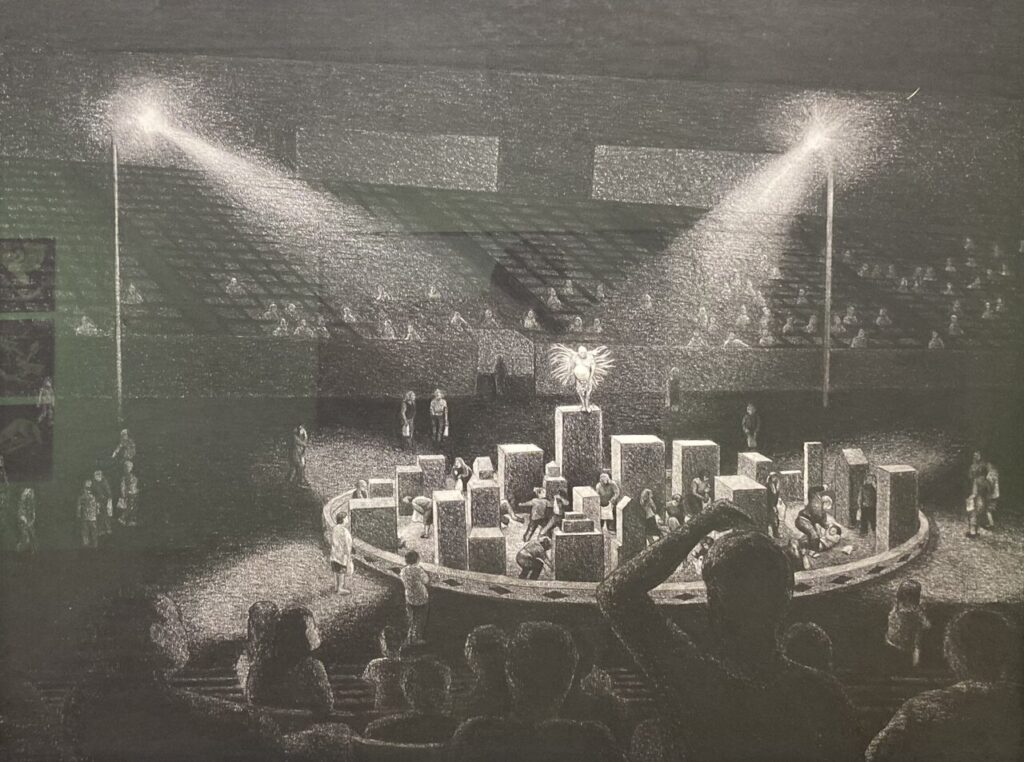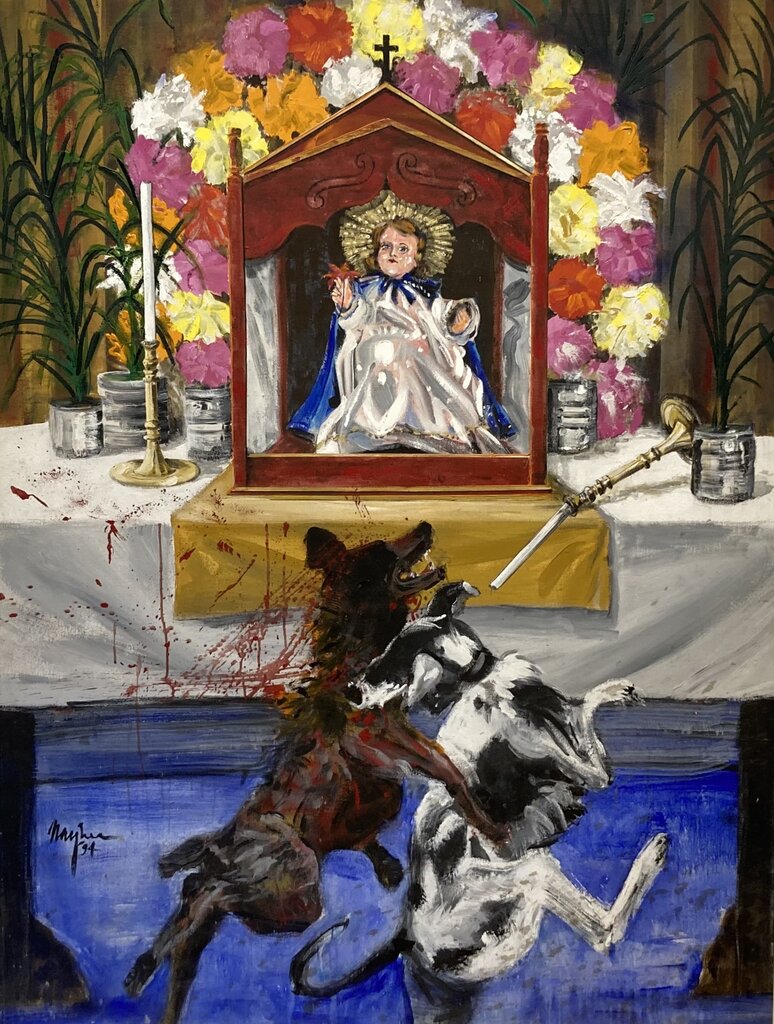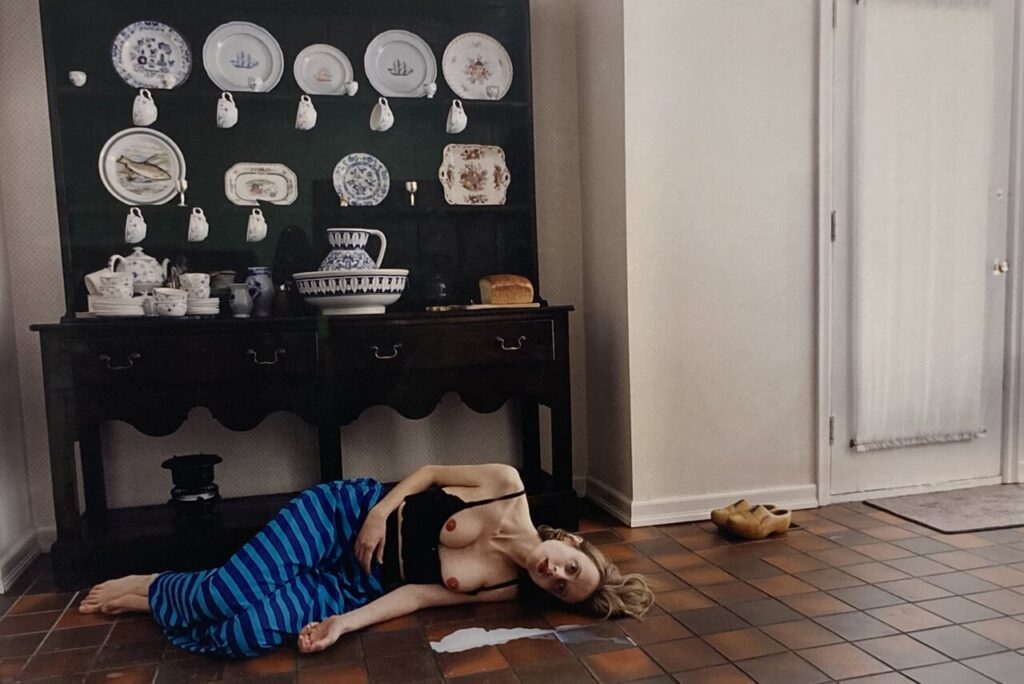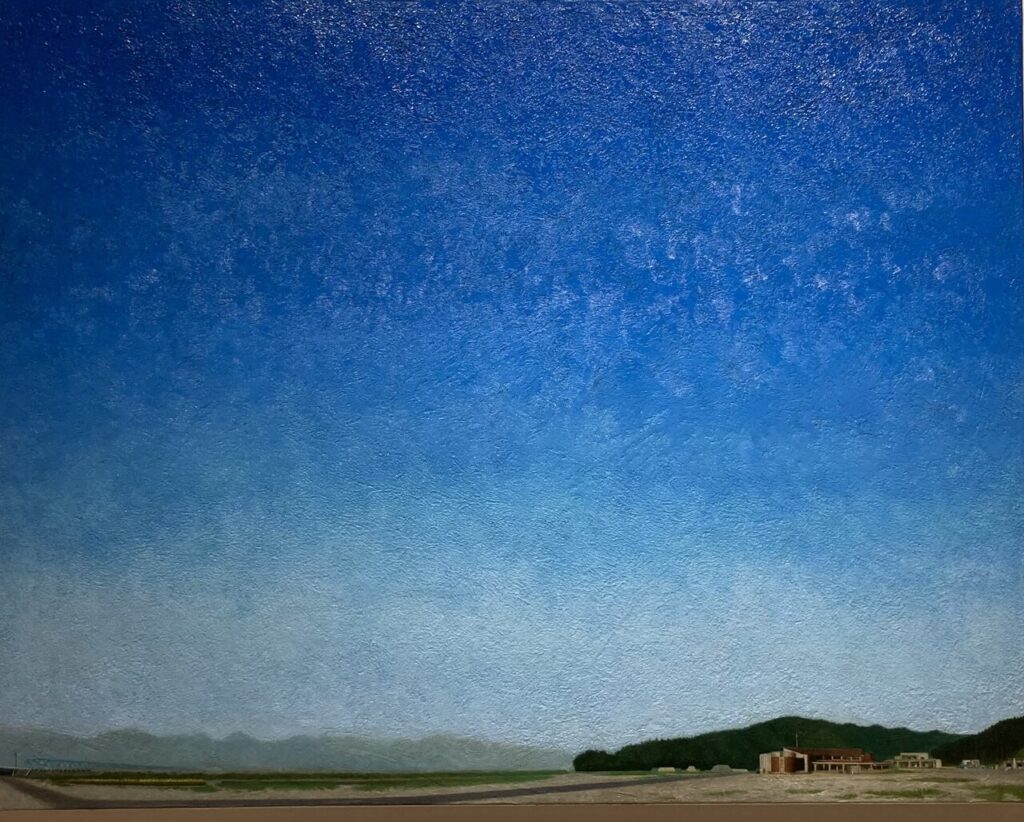Walking in from the sun-mottled courtyard to an exhibition about loss and heartache changed the state of my mind into a sombre reflection. Snuffed-out candles, vacant pews, and unanswered prayers make up the exhibition titled The Empty Church. This haunting show curated by Rawish Talpur at Christopher Cutts Gallery focuses on loss.
Installation view of The Empty Church at Christopher Cutts Gallery
The installation created by Christy Langer consists of a series of paintings arranged in a vertical line, accompanied by a sculpture on each side. Each painting depicts cream-coloured birds. On the top is “Sebastian” with a waterfowl then it is being attacked by two praying mantes in “Martyr” (in the middle) and then in “The Merry” (on the bottom) the birds are consumed by a fox with remnants of other small birds as indicated by their skulls.
Christy Langer, Sebastian (top), Martyr (middle), The Merry (bottom), each 2009, oil on canvas, 18 x 18 inches; sculptures: Bundles (left) and Bundles II (right)
The motif of the small birds is also maintained in the highly realistic sculptures installed alongside the paintings, “Bundles” and “Bundles II.” They highlight the subjects, already easily identifiable in the paintings against the dark merlot—nearly black—background. The arrangement of the works suggests a cross, adding a hint of Christianity through the stigmata on the birds. The white bird symbolically suggests peace, though they are of a different species than the traditional dove. The works encapsulate the notion of pain on display, manifestations of violence, and looming loss— a fitting start to the exhibition.
Christy Langer, Bundles, 2009, resin, string, horseshoe nail, oil paint, 6 x 6 x 2.75 inches (left) and Bundles II, 2009, resin, string, horseshoe nail, oil paint, 6 x 3.5 x 2 inches (right)
Working with highly realistic forms, “Bounty”is a gripping display of a walleye, lacerated at its stomach to reveal a sprawl of gold eggs in a pool of blood. Langer’s dedication is evident in the details, in the luster of the golden eggs and in showing the dramatic, cruel end of the fish in its arched pose.
Christy Langer, Bounty, 2010, silicone, oil paint, glass, beads, urethane, 2.5 x 20 x 8.5 inches
“Misuse of Youth” (2007) by Carlos & Jason Sanchez is also a dramatic piece. It depicts two uniformed soldiers somewhere in a desert in a shallow trench in the dirt. One of them is lying on his back, seemingly seriously hurt, unable to move, possibly dying. He desperately holds onto the vest of the other soldier, begging for help. Judging by the facial expression of this soldier, the chance of rescuing his comrade is very slight. “Misuse of Youth” reflects on war, violence, and whether or not photography can capture the magnitude of truth and hurt it aims to document. The scale of work captures the attention of the audience easily as the figures are nearly life-sized.
Carlos & Jason Sanchez, Misuse of Youth, 2007, inkjet print, 58.5 x 87 inches
“Death of the Child” by Rae Johnson is an outstanding work in this exhibition. The unsettling painting features swaths of colour emanating from writhing bodies. The layers of limbs, faces and light create a confrontational and violent display. This work was influenced by a rape and the murder of a girl, and the distortions and violations truly express this cruel, physically and emotionally unnerving experience.
Rae Johnson, Death of the Child, 1985, oil on canvas, 78 x 89 inches
In Sherri Hay’s “Game Three” there are crowds of people: an audience watching men fighting in an enclosed, stone-labyrinth kind of area, on a spotlighted platform. The composition depicts voyeurism, people watching and even enjoying looking at people fighting and getting hurt, from a safe distance.
Sherri Hay, Game Three, 2006, charcoal on mat board, 29.75 x 39.5 inches
“The Empty Church” (1994) by Gordon Rayner features two dogs fighting in front of an altar. The altar is dedicated to the child Jesus, with divine rays radiating from his head. The Jesus figure is placed in a wooden shrine surrounded with a floral arch. The fight between the dogs adds an element of chaos to the devotional space by way of the splatters of blood and the fallen candles. Rayner’s depiction is of a violent sort of prayer, marking the transformation from supplication to desperation.
Gordan Rayner, The Empty Church, 1994, acrylic on canvas, 71 x 54 inches
Displays of possible death are the focal points of Janieta Eyre’s works in the “Rehearsal” series (1993-1994). The photographs feature women in lifeless positions on the ground, limbs extending outwards. These contemplations on death consider the mortality of the self and the question ‘What if it ends here?’ At any moment our lives could end and there’s no way to predict whether it will happen in the kitchen, just as we finish a drink, or while restrained in an unfamiliar room.
Janieta Eyre. Rehearsal, 1993-1994, C-print, 13 x 15 inches
With loss comes loneliness and isolation as depicted in “Ishinomaki Okawa Elementary School” (2015) by Daisuke Takeya. The work depicts a bright sky moving from cobalt to powder blue. In the lower right corner of the painting are buildings situated in front of green hills. There is a highway establishing perspective in the lower left corner, with the road going past the buildings into the greenery. While it is beautiful, the isolation indicated by the lack of people is clear. Were those buildings left behind as a testament to the community? Will anyone return?
Daisuke Takeya, Ishinomaki Okawa Elementary School, 2015, oil on canvas, 36 x 46 inches
Not all questions are answered, though they make for a meaningful gallery visit. Similarly, not all loss can be translated into something soft and palatable. The works in The Empty Church are mesmerizing though not comfortable. We are not put at ease. Talpur’s curation strikes a careful balance between showing pain in a beautiful way as well as its true horror.
Text and photo: Rashana Youtzy
Featured image: Rae Johnson, The Dawn, 1985, acrylic on canvas, 62 x 79 inches
*Exhibition information: The Empty Church / group show, July 20 – August 10, 2024; August 27 – August 30, 2024, Christopher Cutts Gallery, 21 Morrow Avenue, Toronto. Gallery hours: Tue – Sat 10 am – 6 pm.

